March 31. Well, Carol and I, and our granddaughter, Phoebe, take off for Ghana on Monday, so here are a few random facts about Ghana that I lifted from Wikipedia, augmented by NYT articles. (If you want to see Phoebe’s blog, which will be much more interesting than mine, you can go to https://phoebeinafrica.weebly.com/blog. She has already posted.). I’m giving you less background than usual, because you don’t really read those long descriptions I write, do you?
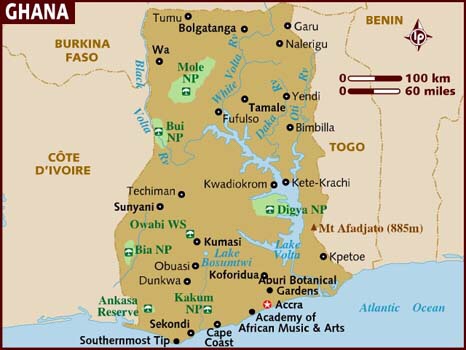
Accra’s population is almost 4 million; Kumasi, where we’ll be staying, over 2 1/2 million, in a country of some 24 million, located just North of the equator. A stable constitutional democracy which gained it’s independence from Britain in 1957. Its first president, Dr. Kwame Nkrumah, dreamt of a united Africa, but was overthrown in 1966 by a CIA-approved coup. A series of other coups ensued and eventually Jerry J.J. Rawlings took over in 1981. After two unsuccessful runs at the presidency, John Mills was narrowly elected in 2009, but died in 2012. Following the presidential election John Dramani Mahama became President-elect and was inaugurated as the 4th President of the Fourth Republic of Ghana and 7th President of Ghana in 2013, and was succeed by Nana Akufo-Addo, who was elected and inaugurated in 2017, thus maintaining Ghana’s status as a stable democracy.
The Portuguese were the first European colonial power in the 15th century, but others followed. The British, attracted by gold, called it the Gold Coast and the French, enchanted by the trinkets worn by coastal people called the area to the West the Ivory Coast.
In addition to gold, Ghana exports cocoa, timber, electricity, diamonds, bauxite and manganese. The country remains heavily agricultural, and about 25% of the population lives on less than $1.25/day. Recent discoveries of oil portend economic growth.
English is the official language, but more than 100 ethnic groups speak many other languages.
We’re all incredibly excited, but, of course, I have no photos yet, so I’m going to cheat a bit to give you a small taste of Ghana through a few photos of children and chiefs taken on Carol and my prior trips. Meet you in Ghana in a few days.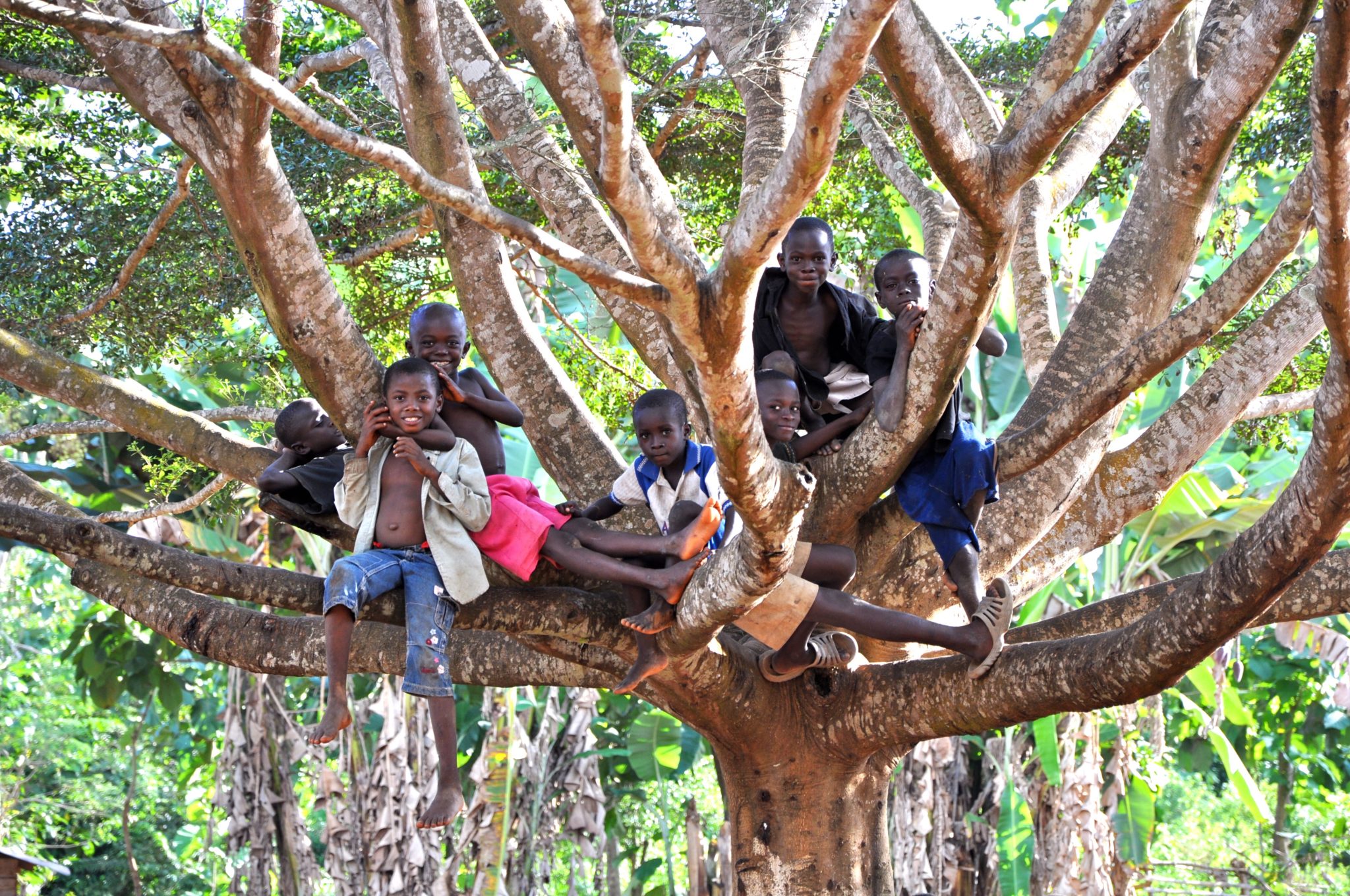 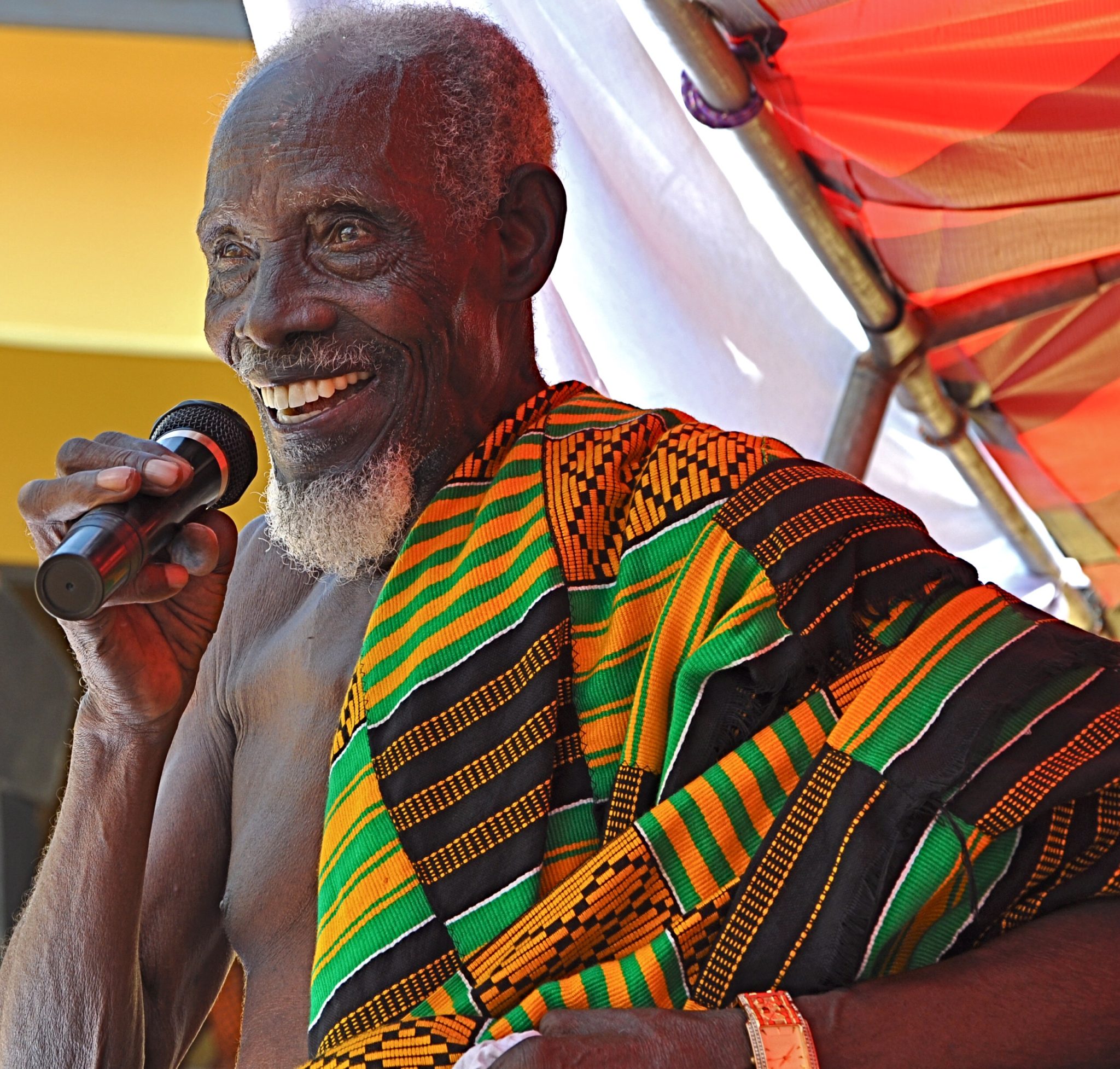 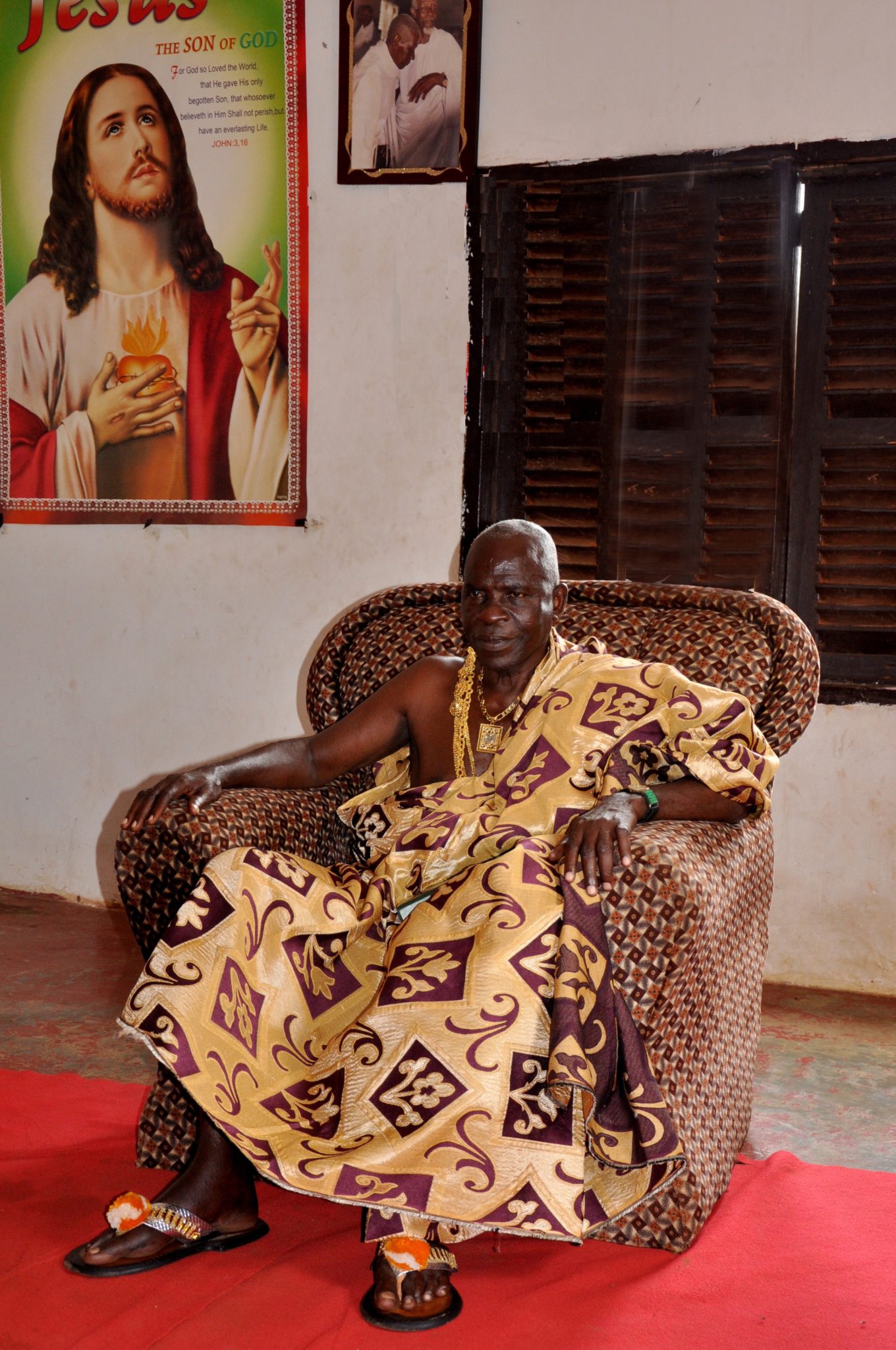 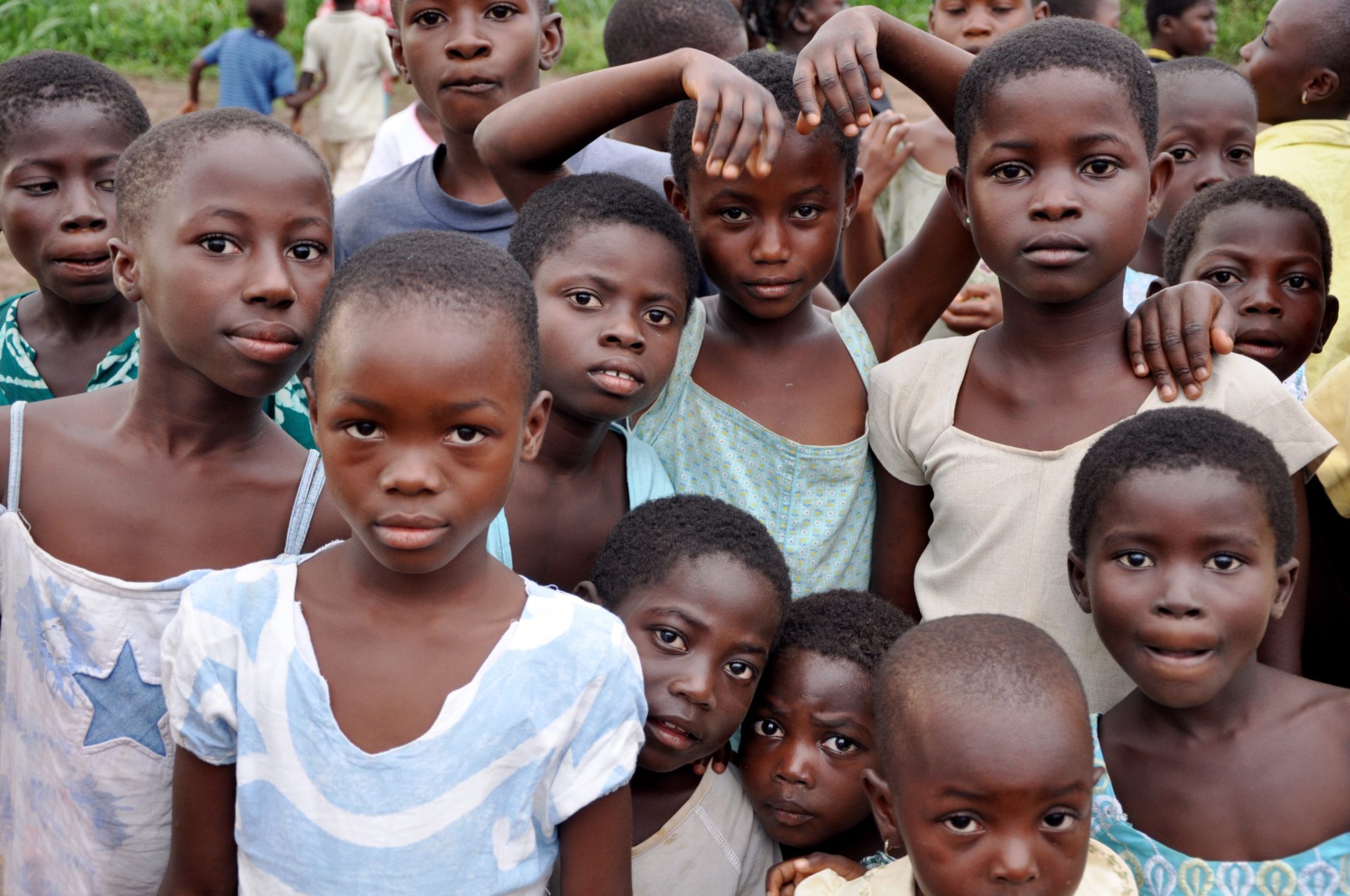
.
.
April 11. We are off to Botswana this morning, after our brief stop in Johannesburg overnight. Once we leave Joburg, we’ll have no WiFi for about nine days. But, not to worry, I’ll be keeping the blog and will post it a day at a time, once we return to civilization. Consider the nine days your blog-reading vacation. You’ve earned it.
Now, we don’t want you to think we are taking just any old trip. The first six days in Botswana will be spent on a mobile tented Safari. In taking this safari, we will be following precisely in the footsteps of Prince Harry and Meghan Markle, as you can see from this excerpt from a Vanity Fair Article last month.
This particular trip [to Botswana] was a special, surprise birthday getaway for Markle, as well as a first anniversary trip [for Harry and Meghan].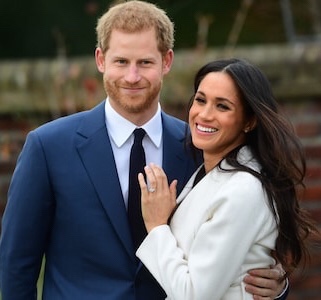
Harry [Diana’s son] had booked a £650-a-night tented suite with a carved wooden king-size bed and open-air shower. They slept under the stars and enjoyed their meals al fresco. From their veranda they could see zebra cooling themselves in the nearby watering hole and other wild animals at close quarters. It was the romantic getaway Harry had hoped it would be and according to a report in the Mail on Sunday, the couple spent an afternoon enjoying lunch before walking hand in hand to a prime spot overlooking the river, where they watched pied kingfishers swooping over the water and tried to spot the spectacular African fish eagle.
Africa has always been a favorite spot for the younger of Princess Diana’s sons. He mentioned in an interview with Hello! magazine in January 2017 that he had first visited the country after his mom died in 1997. Ever since then, it has been a place of solace for him.
“I first came in 1997, straight after my mum died. My dad told my brother and me to pack our bags—we were going to Africa to get away from it all,” he said then. ”My brother and I were brought up outdoors. We appreciate nature and everything about it.”
For her book Nicholl spoke with Roger Dugmore [our guide for our tented safari, of course], a safari park owner who first met Harry in Botswana in 1999 and became friends with him. He said that Botswana has always a place where Harry could be a normal person, away from the paparazzi.“You know, it’s a very different world here. I think what he loved most was the fact that he was really treated like a normal person; he’s just one of the boys. I think he once said “You know, if I could have it another way, I think I’d be a safari guide in Africa.”
We’re planning to talk to Roger about our getting an invitation to Harry and Meghan’s May 19 wedding for Carol, Phoebe and me. Besides the Botswana tent safari connection, Meghan, Carol and I (and our daughter, Jodi) share our Northwestern University degrees (though we were not classmates), so I’m thinking this should be a done deal. Watch the blog in May for details and photos from Windsor Castle.
So, now that I’ve got your attention, here’s a bit about where we’re headed. I think the stuff below about the Okavanga Delta is especially interesting,
Formerly known as Bechuanaland, a British protectorate, Botswana gained independence in September 1966. The country is divided into 9 districts, with its largest towns being: Gaborone, Francistown, Selibi-Phikwe and Lobatse. Its dominant economic activity is diamond mining, followed by tourism and manufacturing, with agriculture also playing a significant role. It is predominantly flat, dominated by the Kalahari Desert which covers up to 70% of its land surface. It’s Capital is Gaborone.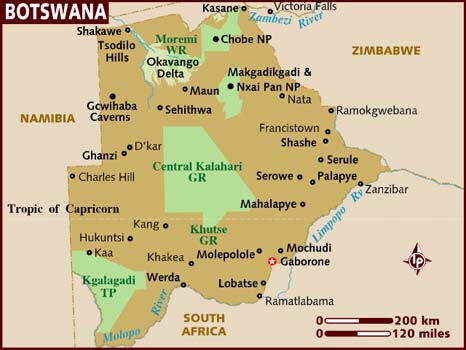
Botswana is a landlocked country, bordered by Namibia (west & north); South Africa (south); Zimbabwe and Zambia (east). The climate is dry, semi-arid (rainfall is unpredictable and droughts occur often) with warm winters and hot summers with humidity raising summer temperatures into the 40’s (Celsius; 100 ̊F). Summer: Sep – April / Winter: May – Jul. During summer, short thunderstorms are frequent, hot days and nights with a cooling off after rain spells. During winter, the days are dry and warm, with night time temperatures dropping with cool to cold nights and early mornings.
Ethnically, the country is 79% Tswana ( oe Setswana), Setswana is the principal language and 72% of the country is Christian.
Botswana is the world’s largest producer of diamonds and is twice the size of the United Kingdom – yet only has a population of only about two million people. Since independence in 1967, it has had one of the fastest growth rates in per capita income in the world.
The miraculous Okavango Delta (250,000 hectares), fed by crystal pure waters from the Angolan Highlands, floods once a year, spreading fingers of water through a desert wonderland, resulting in teeming herds of game and unique water and land based game viewing opportunities.
The Okavango Delta is relatively new in geological terms—only a meagre 60 000 years old.
Before the formation of the delta, for some two million years, the Okavango River flowed right through Botswana and drained into a massive lake somewhere in the region of the Makgadikgadi pans in Botswana.
Rivers are hard-coded to flow towards big bodies of water like lakes and seas. But then about 50 000 years ago, there was a massive earthquake in Southern Africa. The land near today’s border between Botswana and Namibia shifted, interrupting the Okavango River’s usual, obedient flow.
It was a shock to the river’s system. The water had no choice. 11 trillion litres spilled out into the desert like oil in a pan, flooding a vast area with a steady torrent of fresh H2O.
One awkward geological twist of fate had created the greatest natural oasis on earth—the Okavango Delta.
Today, the Okavango remains as wild as it was when it formed. The inundated area of the Okavango Delta fluctuates between 6,000 to 8,000 square kilometres every year, swelling to up to 15,000 during the flood. The swamps and floodplains have kept human development at bay, and the wildlife remains a wild as it was 10,000 years ago.
More than 150,000 islands now dot the Delta, varying in size from several metres to larger than a big city. Chiefs Island in the centre of the delta is the largest island; it’s like a great big time capsule, a snapshot of the Africa of old, with great herds of elephant lumbering across the plains and super prides of lions stalking the night.
Flying into the delta is the only real way to appreciate this natural anomaly. As you lift off from the dusty town of Maun, the landscape below transforms from barren grey desert into a sea of gin clear water weaving between a patchwork of green islands as far as the horizon
There is no spectacle like the Okavango Delta in flood, when rains from Angola’s western highlands filter over nine months to the Delta, transforming it into a unique system of waterways that support a vast array of plant, animal and birdlife. Safari activities by water are the primary speciality of the Okavango and gliding through the waterways by mokoro, a flat bottomed boat, poled by a local guide makes the Okavango experience unique in the world.
This region boasts large animal numbers especially in the flood months, which range from May to October. Most commonly seen are elephant, hippo and crocodiles as well as unique game such as red lechwe and sitatunga. Lion, wild dogs, buffalo, hyaena and cheetah are also often seen as well as prolific birdlife, including king-fishers, cranes and fish eagles. In the Moremi, certain areas are particularly renowned for certain types of game, including Xakanaxa Lagoon (wild dog, cheetah and a very high density of antelope) and Khwai River (vast herds of elephant and predators).
So we hope you won’t miss the blog too much these next nine days. We promise some pretty great adventures when we return.
February 5. Generally, in reflecting on the terrific trips that Carol and I have been privileged to taken the past, I remark on how grateful I am to have been able to take the trip and my determination to continue these trips as long as I can, because you never know how long you’ll be able to do that. After this trip, I feel that same way, but with a different and renewed sense of gratitude and a deeper appreciation of my ability to continue these trips.
While I don’t want to get over-dramatic, this could have been our final trip. The accident we had in our van on a downhill road was serious. Had it played out only a bit differently, it could have been fatal. To say that that realization is sobering is a bit of an understatement.
Karl’s handling of this accident was spectacular. He remained calm. He focused on the extent to which people were injured and offered an alternative to individuals of going back to Bangkok. Personally, when we reached Luang Prabang, he accompanied me immediately to the hospital to be examined. His excellent handling of the accident, I believe, was responsible for everyone in the group dealing with this in a way that avoided anyone freaking out over it, which could very easily have happened. Kudos, well done, Karl.
So, while the accident had a major impact on the trip, it did not ruin it. We were fortunate that the accident preceded two days in which we were floating down a river, so the amount of physical exertion was less than it might otherwise have been.
The trip was very good, but, to me, it was too ambitious in its scope. In attempting to cover three countries (four, if you include Myanmar), we wound up not covering any of them in depth. Karl said at the outset that we would be traveling through three different countries and that, by the end of the trip, he hoped we would understand how they fit together, related to each other. I do not think that this hope was realized.
Angkor Wat and the surrounding area was clearly the centerpiece of the trip. Unfortunately we emerged with little understanding of what we were seeing historically, artistically or culturally. It may be that Karl could have presented this himself. If not, we should have had a guide to do it. When we return home and are asked by friends about Angkor Wat, we’ll be able to describe only the spectacular sites we saw and what we may have read about those sites in our own. That’s a problem.
My real feeling is that the trip should have been just Cambodia. That is what Karl knows best. He has lived there for many years, has a Cambodian wife and there is plenty there to occupy a full trip, which would give folks an in-depth experience of and understanding of Cambodia. Karl could have included visits to some of his NGO clients, which would have been of great interest to many people. I’ve suggested that to Karl, so perhaps future travelers will be able to experience this.
I want to mention a few trip experiences that stand out in my mind. I am doing that without going back over my blog, so I’ll be hitting what was particularly memorable to me. In the process, I’ll be omitting several palaces and pagodas. Most of these were interesting enough and worthwhile, but they are not what sticks in my mind. For me, that’s true on every trip—it’s not the buildings that matter most.
The Pink Panther, pole dancing and kick boxing in Bangkok (it’s surprising how little of that Carol and I do in Chicago).
Visit to the long-neck women village.
Early morning with the monks in Cambodia (even though my photos were lousy).
Walking, and seeing life, along the river in Phenom Penh.
S21 prison and the Killing Fields. You don’t come away humming a tune, but it’s important to see.
Night market in Phenom Penh.
Long village street that we walked down before getting on the boat in Cambodia that offered a glimpse of village life.
The Angkor Wat experience, including, especially, the first evening visit to the Victory and Death Gates, and the visit to Ta Prohm (particularly because Karl got us there early enough to avoid the Chinese hordes).
Going to Karl’s house, meeting his family, having Karl and his wife cook a meal for us and seeing the young dancers he invited to perform for us (this was a truly special evening).
The group was a very congenial assortment of folks. As always, one relates better to some than others, but, on the whole, they were excellent travel companions.
Best was that I had my favorite travel companion with me, Carol. At first, she was not going to go on another (damn) photography trip, but she backed off of that when we enticed Robert and Joseph to come along. Then she was going to join us after half the trip, but decided she’d do the full trip when Karl assured her that the two days on the river would be calm. Finally, a day or two before we left, Carol said, well, maybe she’d just take my old camera along. And I have multiple shots to prove that she was into taking photos on the trip.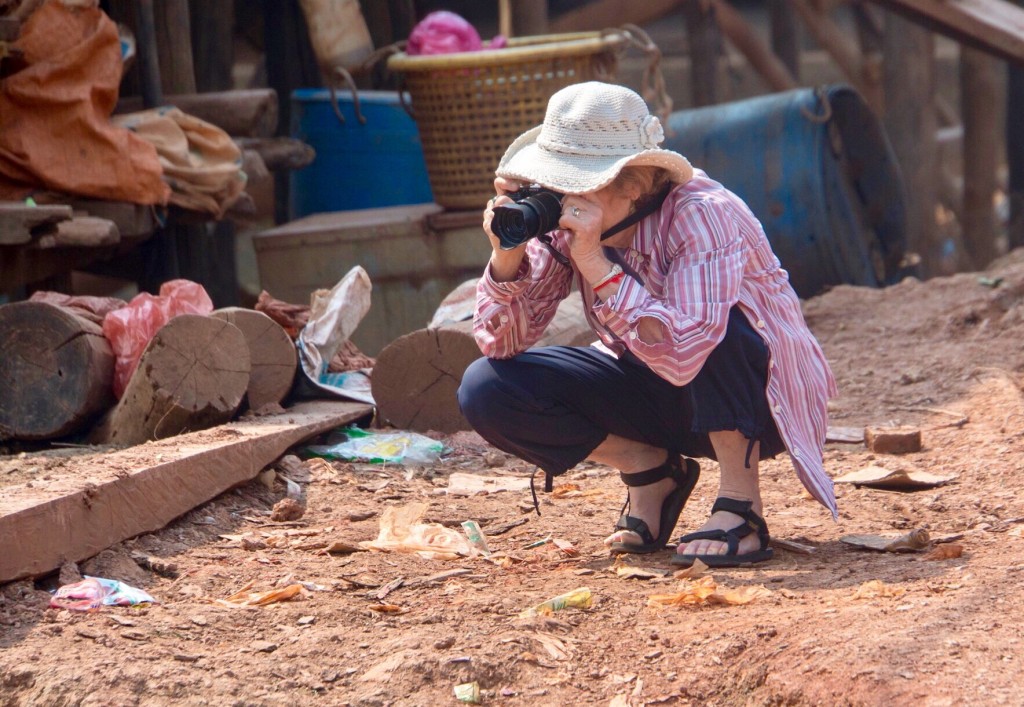
Thanks for joining us and especially to the many who commented on, or emailed me about, the blog. Sorry for technical difficulties I had along the way. I realize that in my last several posts the photos did not load (even though they show up on my copy). If I can figure out why those photos refused to load, I may do another post of just photos. Actually, if you have time to go back to the previous few posts I think you can now see the photos.
To prove that we’re home, here’s Judson’s greeting of Carol.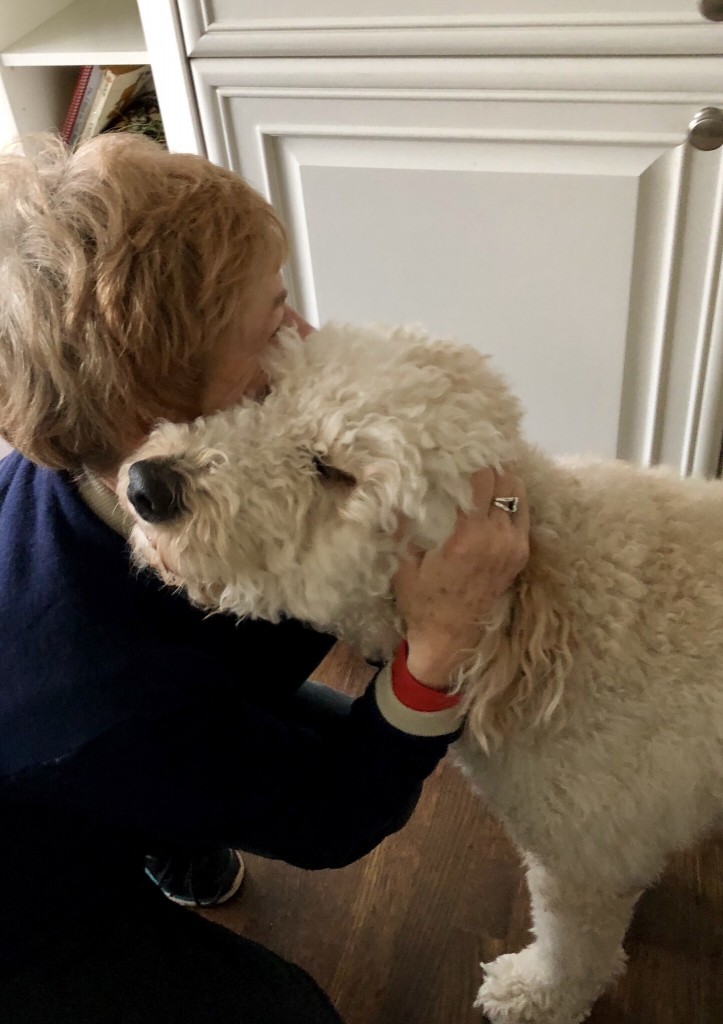
Carol and I take off again in two months for a trip we’ve been looking forward to, with great anticipation, for two years.
February 4. Breakfast with Robert and Joseph at hotel, then minivan to airport. After an uneventful flight, we have some difficulty connecting with our driver, but eventually are driven to the Four Seasons. Meredith has a 10 hour layover in Hong Kong, so we invited her to come to the Four Seasons with us and have dinner at the fancy three star Michelin’s restaurant there. This place is quite beautiful. Here above are a couple of views inside and outside of the room.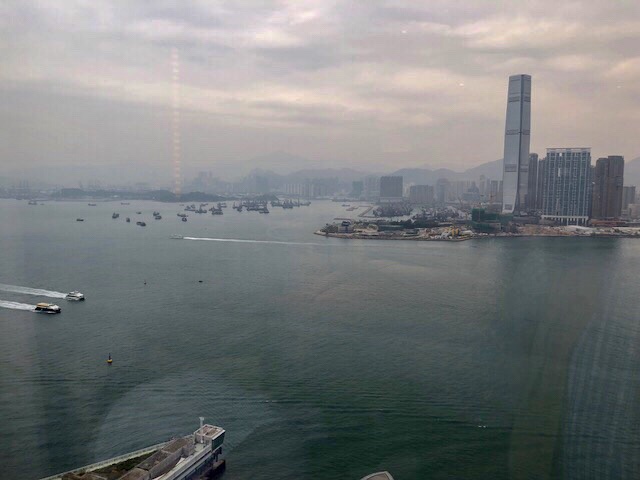 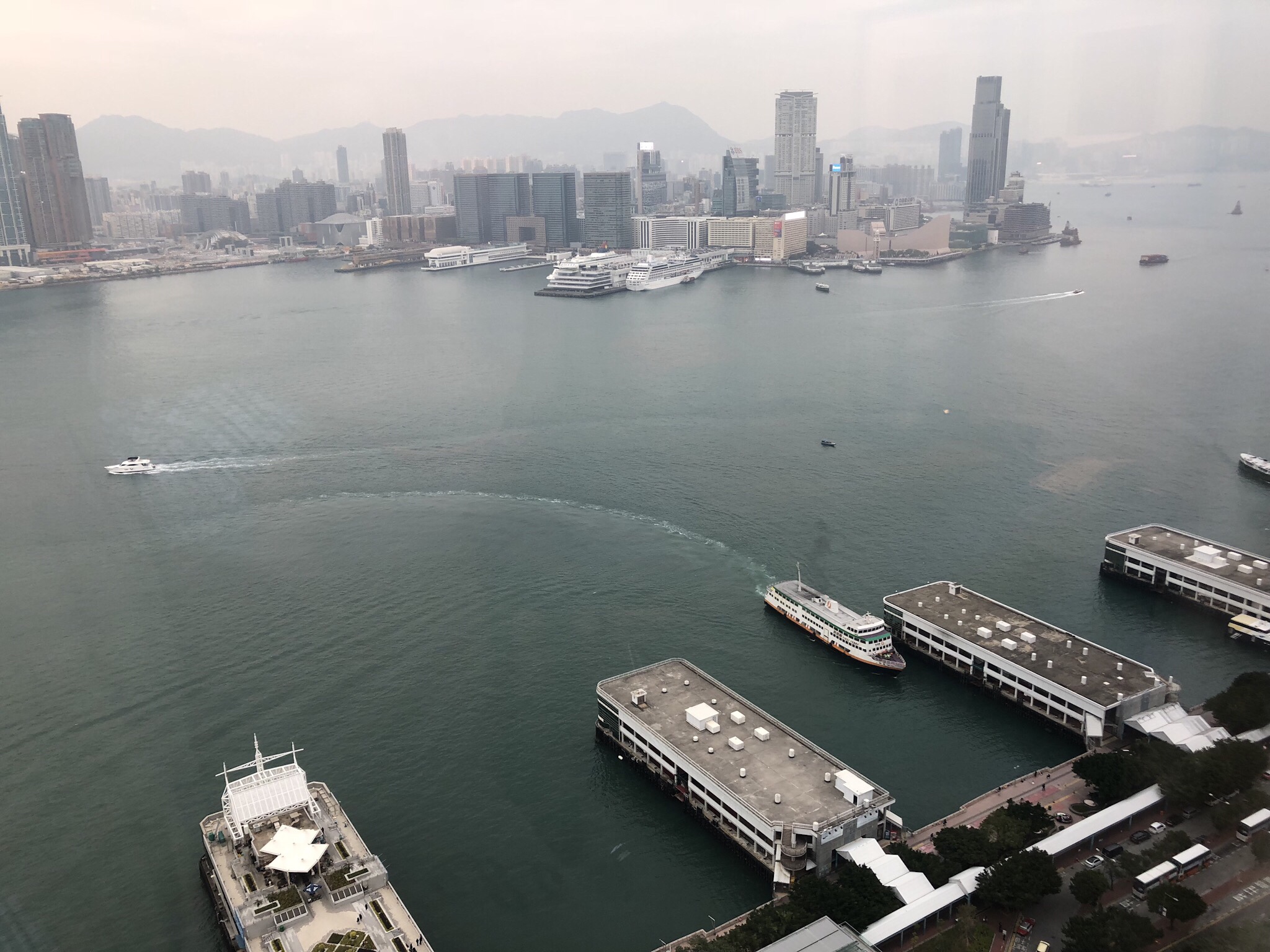 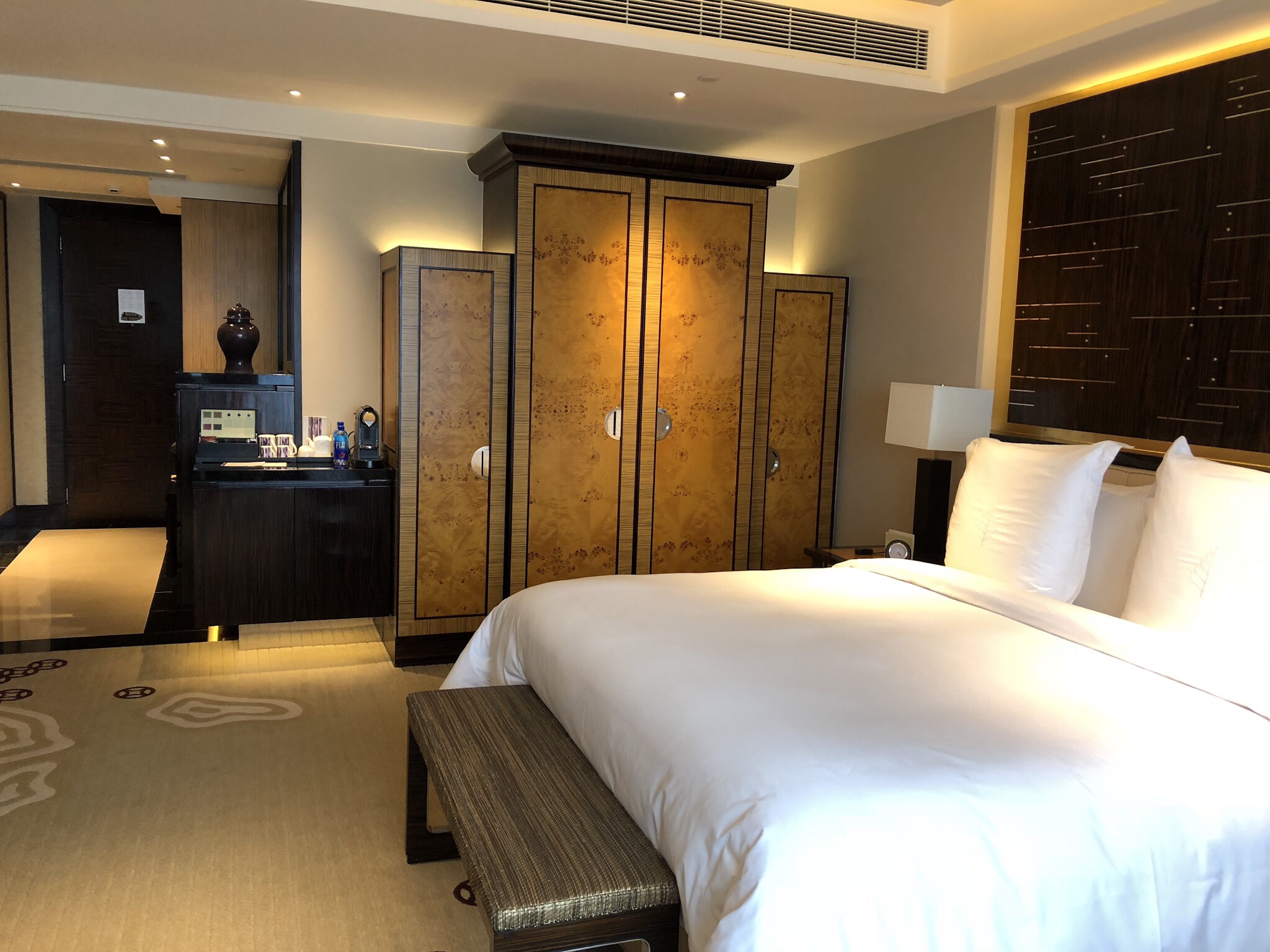
Wonderful dinner at Lung King Heen. Pictured below are a flower on our table, the carving of our Peiking duck and Carol and me at the table. ![]() ![]() ![]() 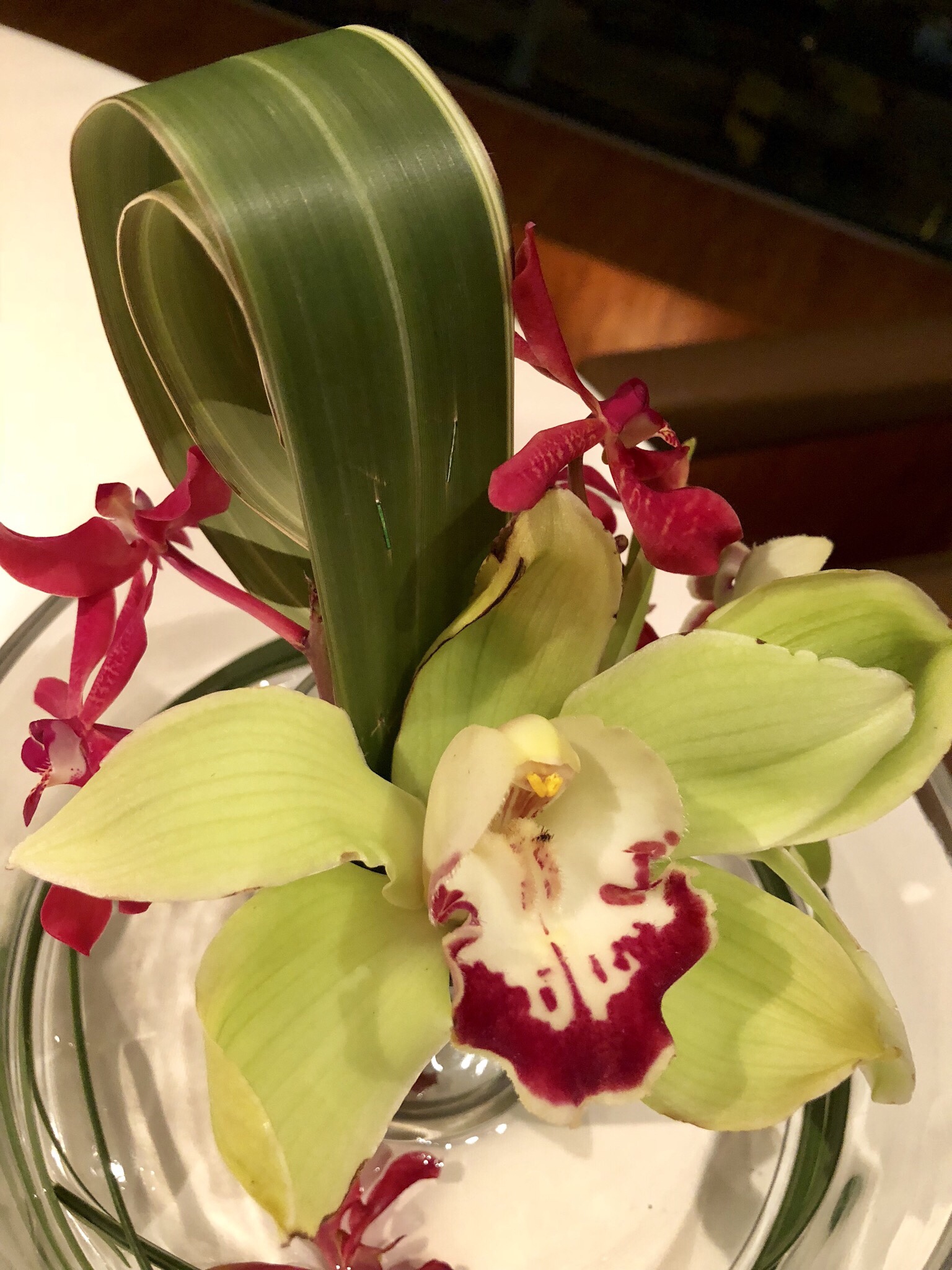 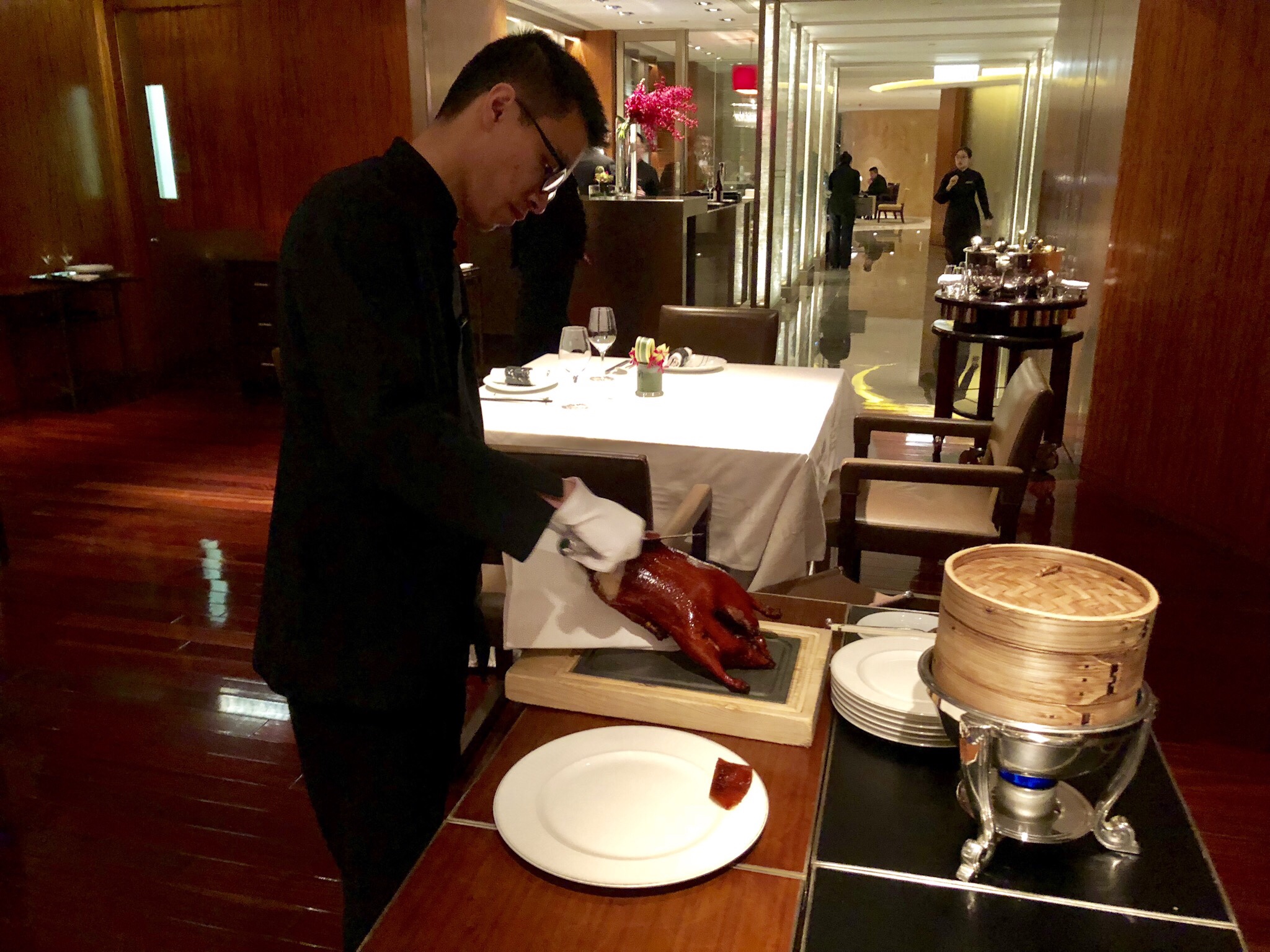 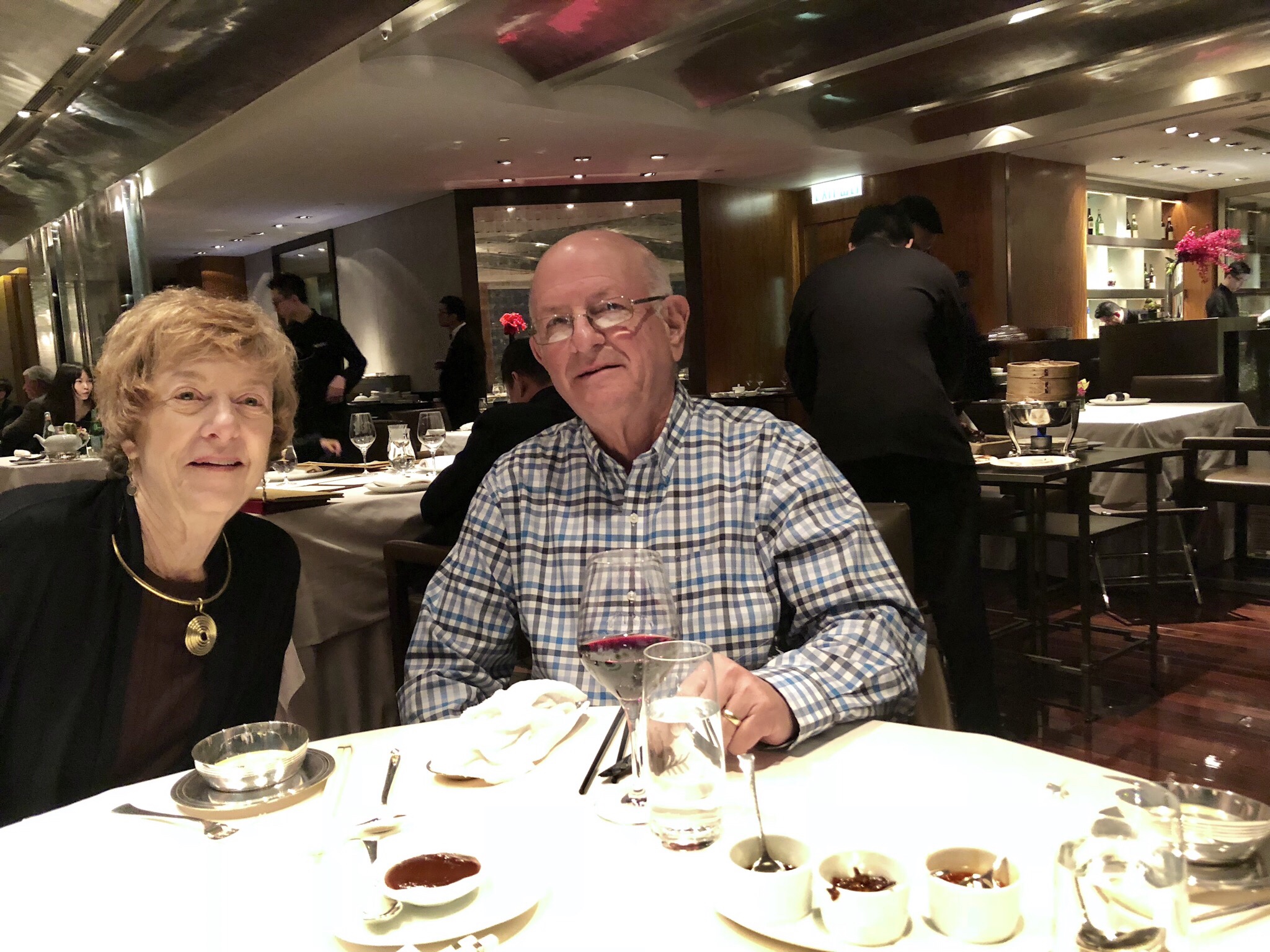
Great breakfast at hotel. Don’t think I’d like a full trip of Four Seasons, but it sure is nice for the last night. Elegant, comfortable…..you name it. It’s good to be king.
At airport, watching end of Super Bowl game, awaiting flight home,
February 2. First we drive to Kompong Khleang, one of the largest settlements on the Tonle Sap Lake, stopping along the way to watch people making “sticky rice”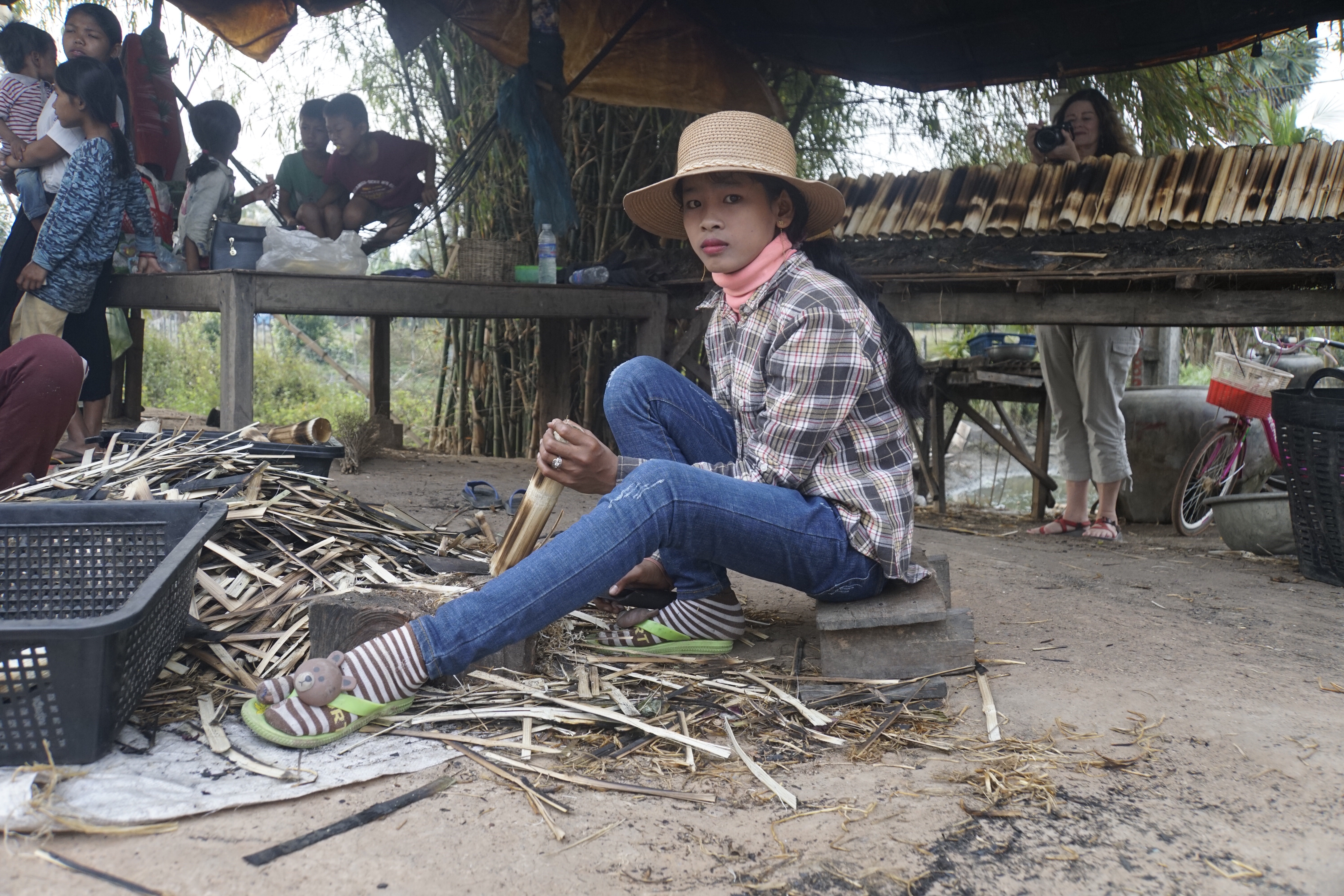
And then we crash a wedding that we pass.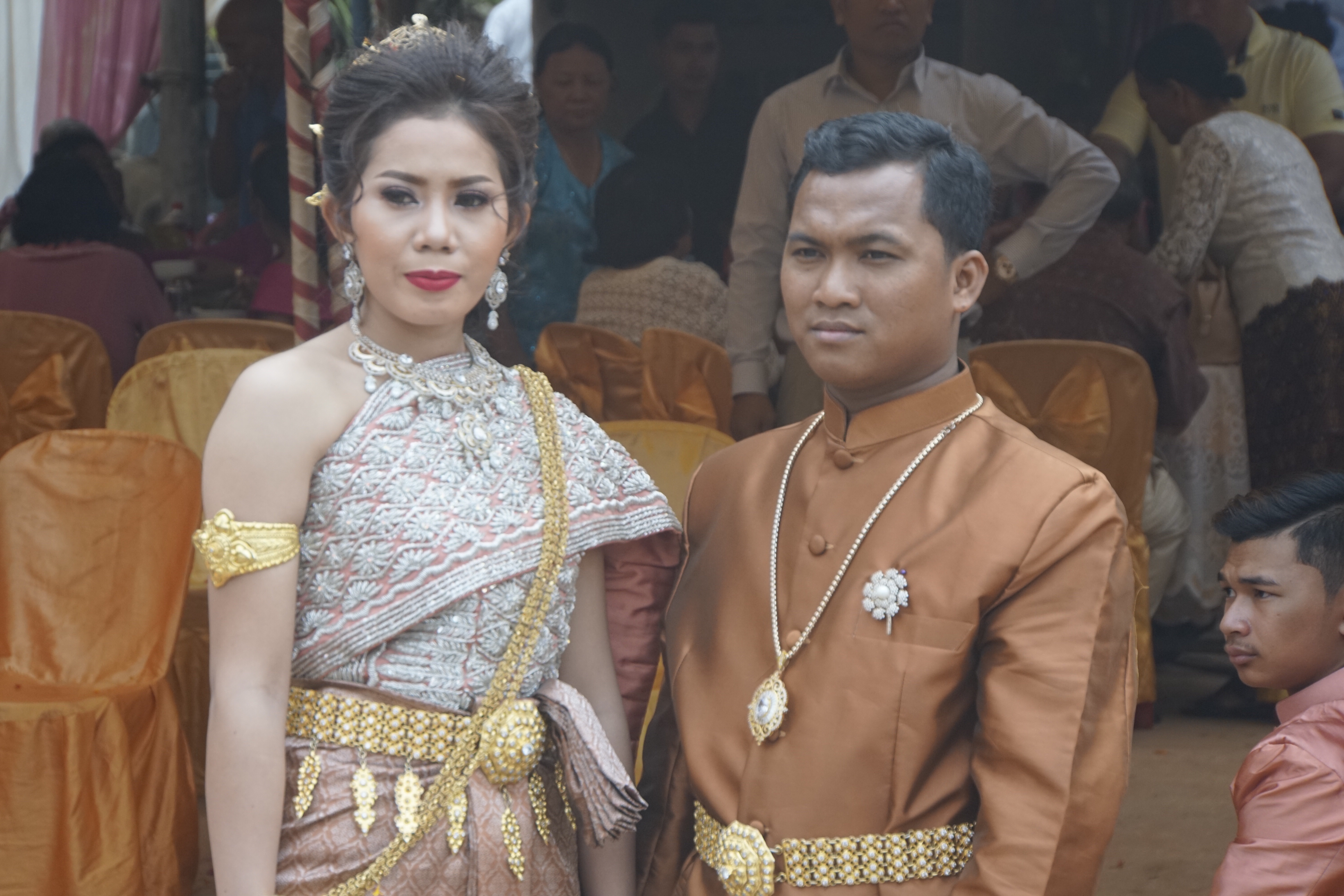 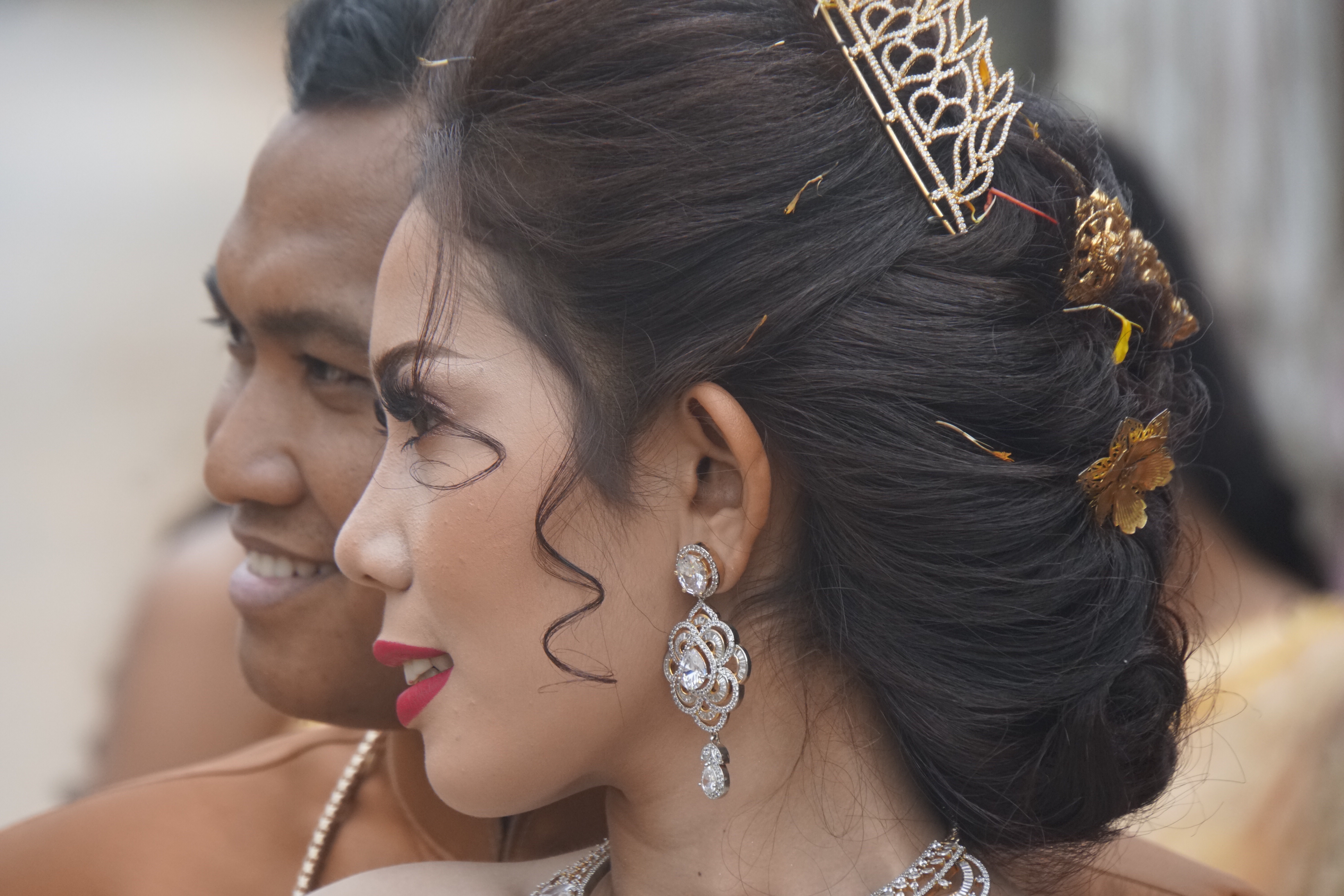
Next we stop in a market at a small village market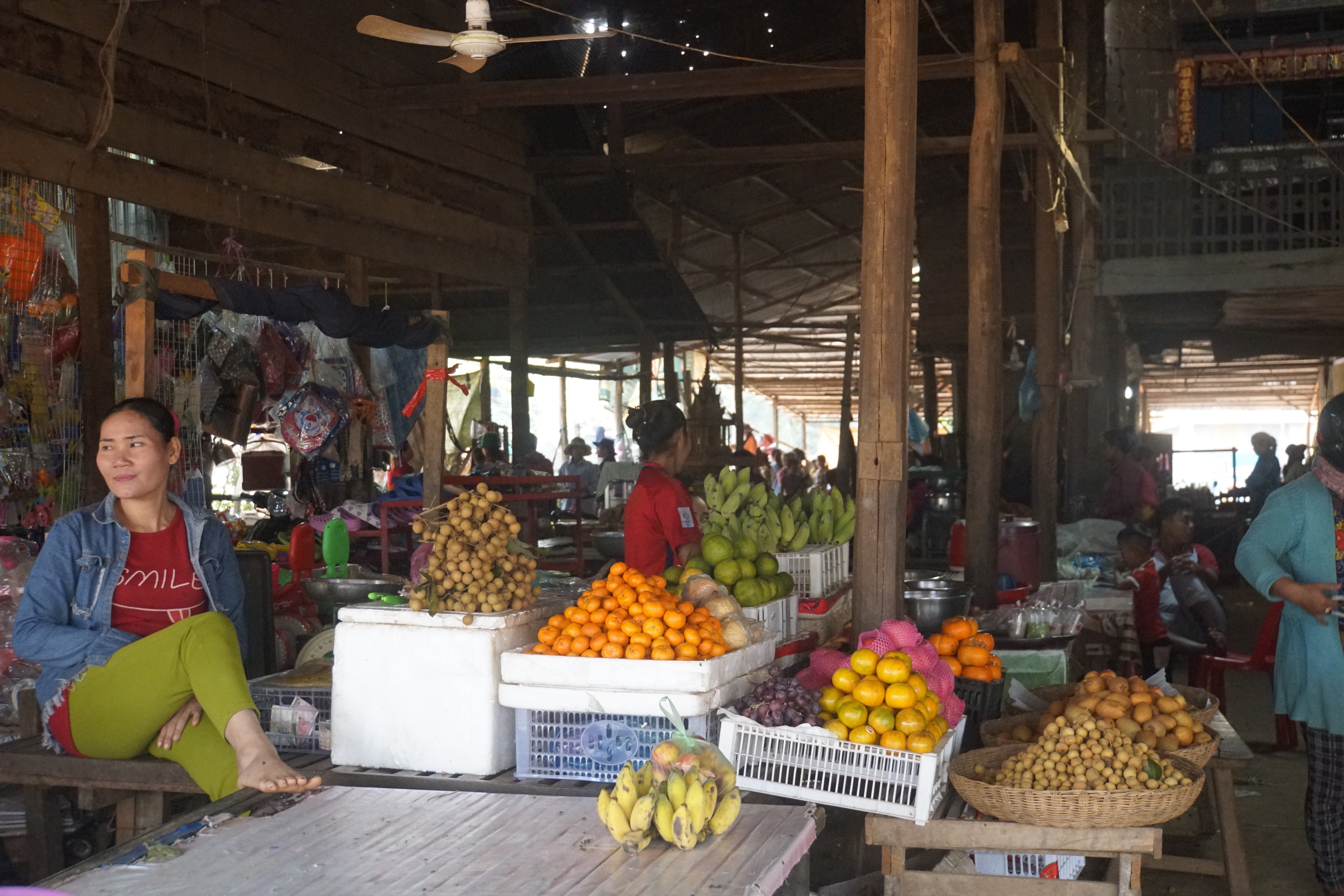 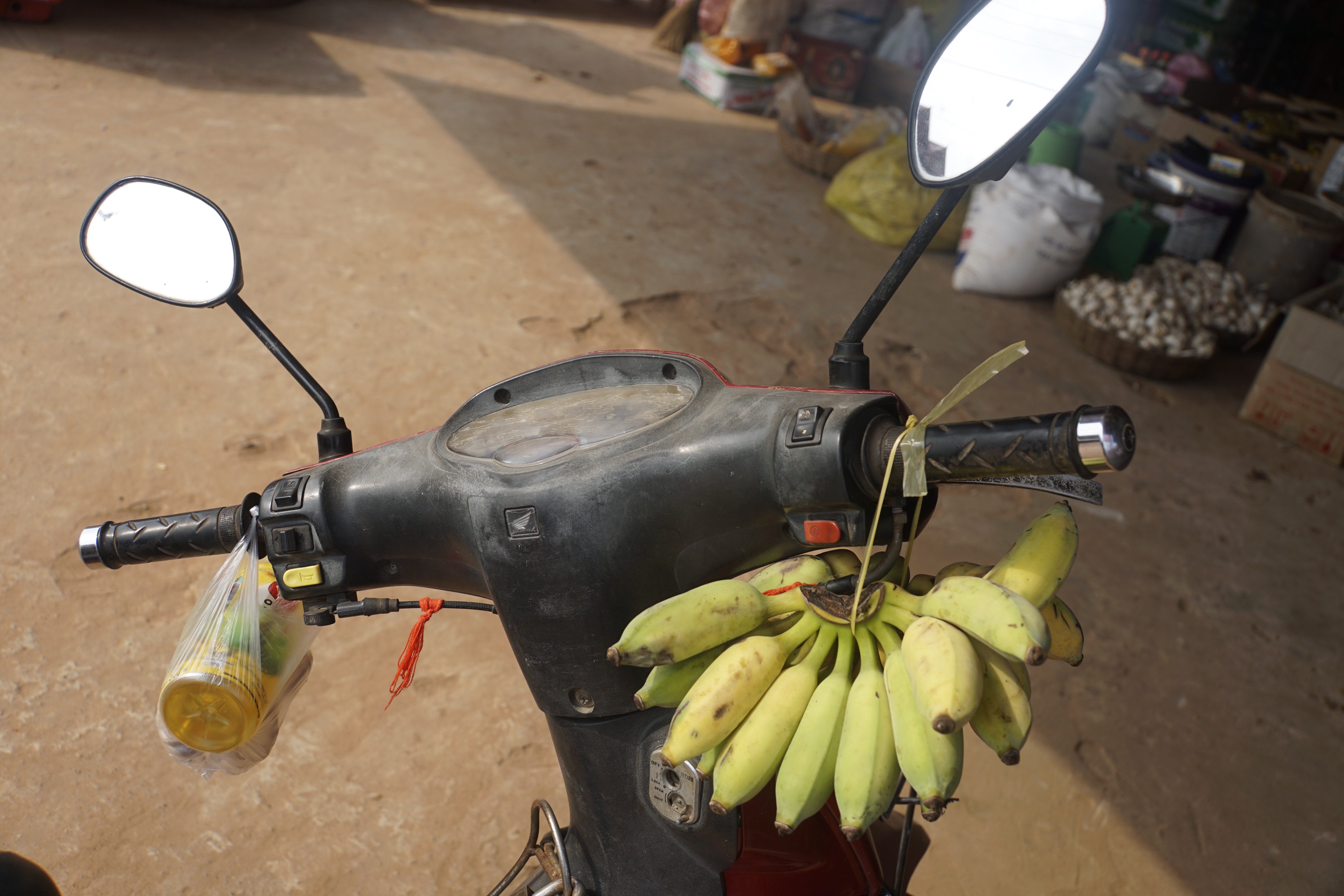
and then walk through a wonderful little town, ripe with photographic opportunities, particularly of children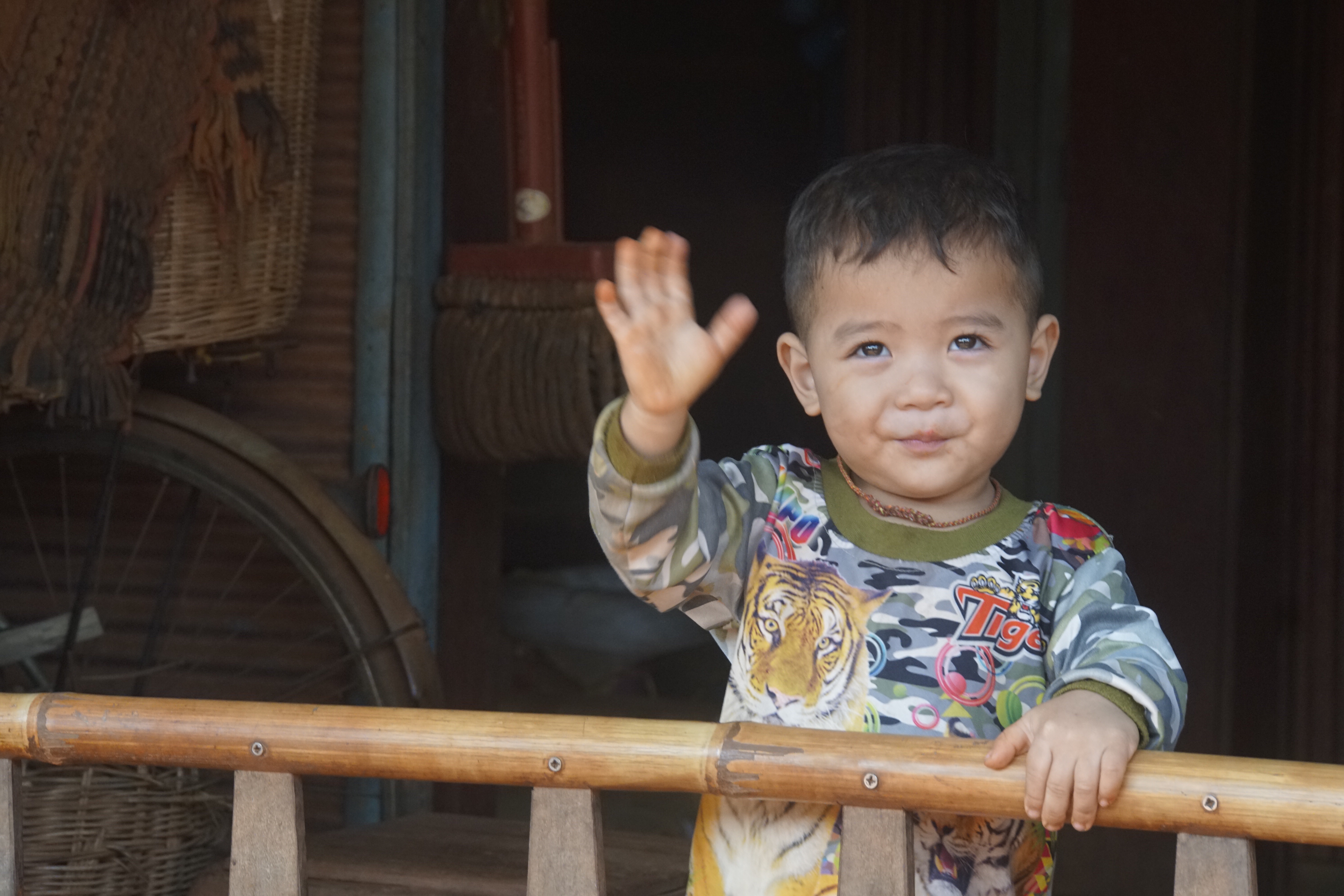 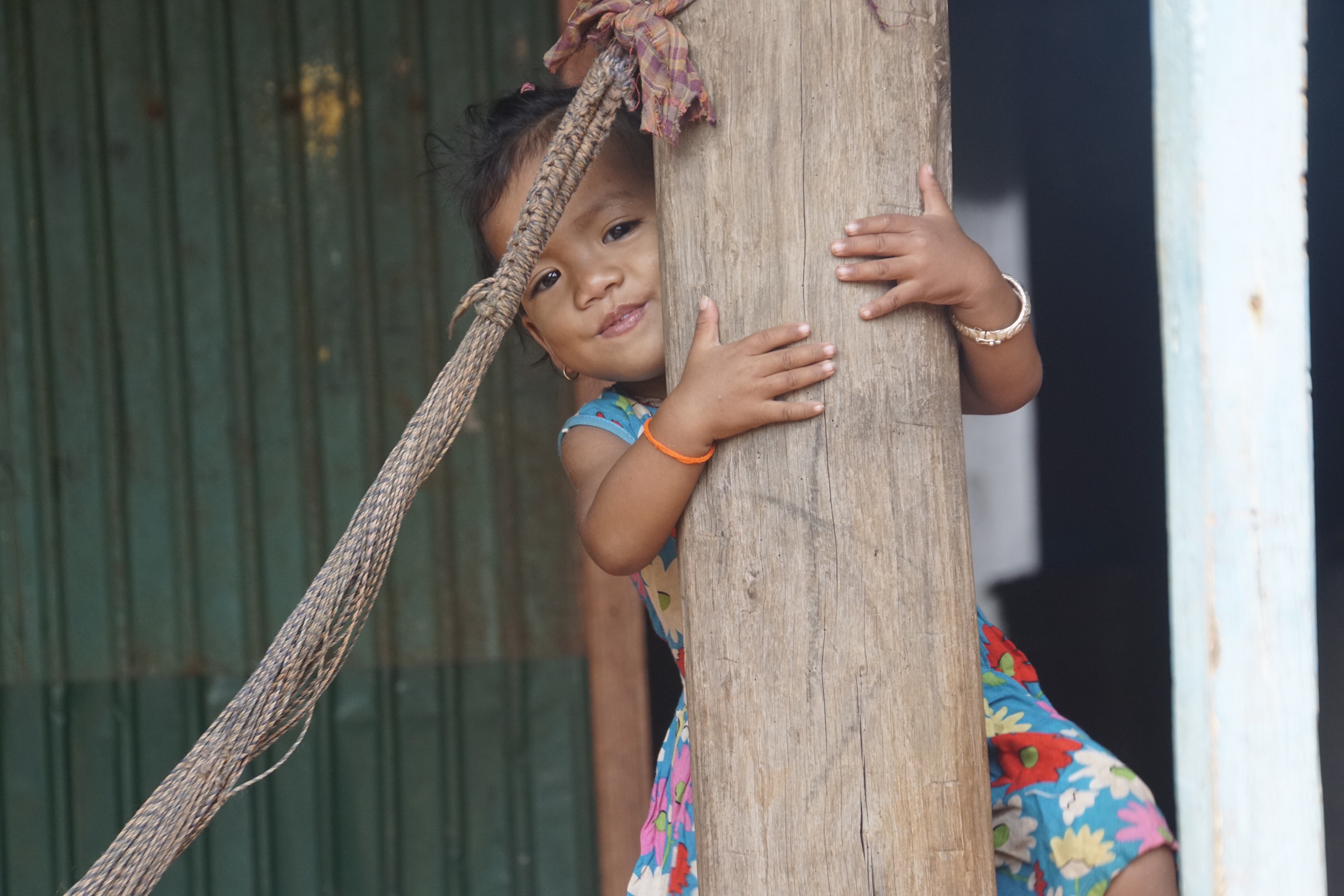 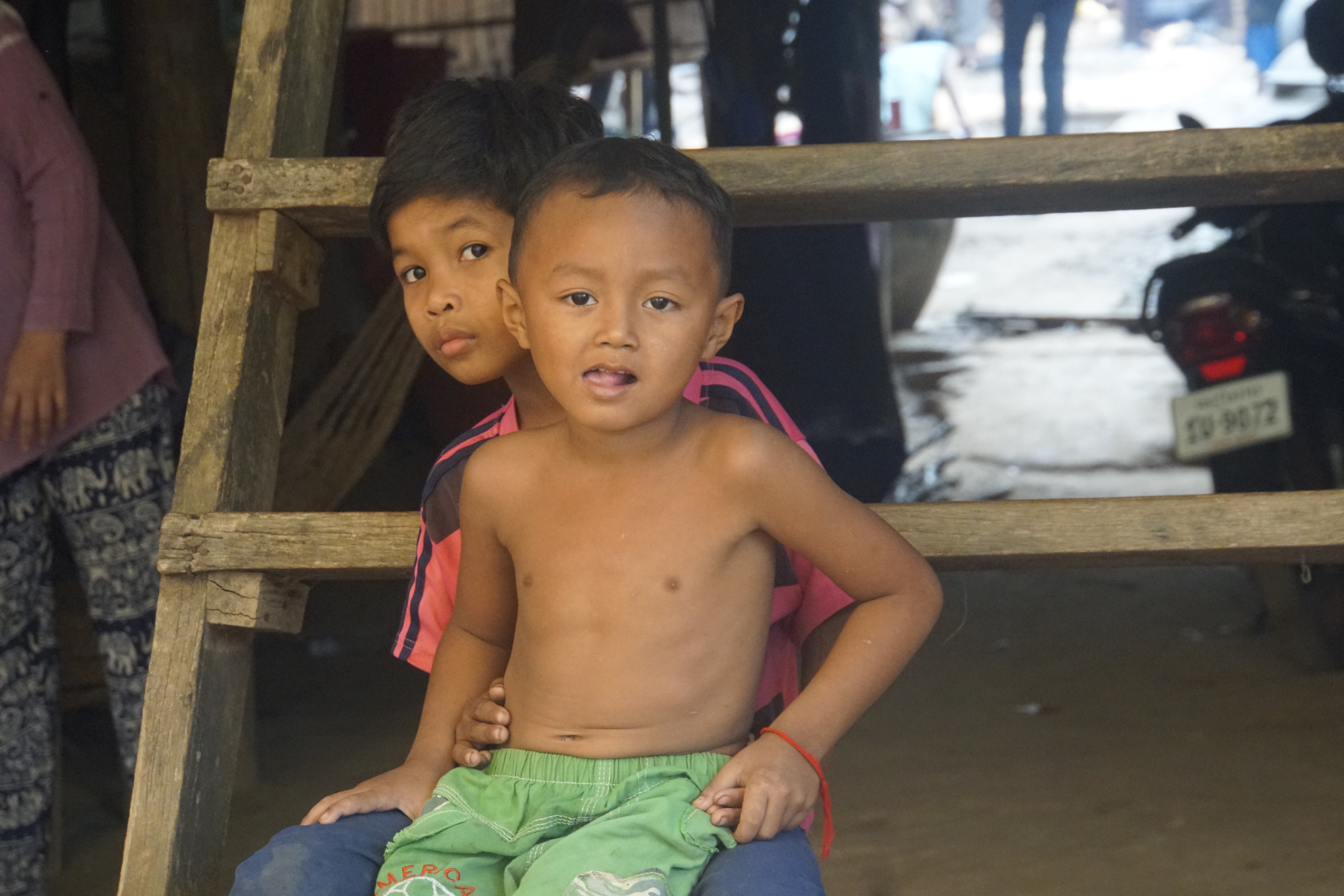 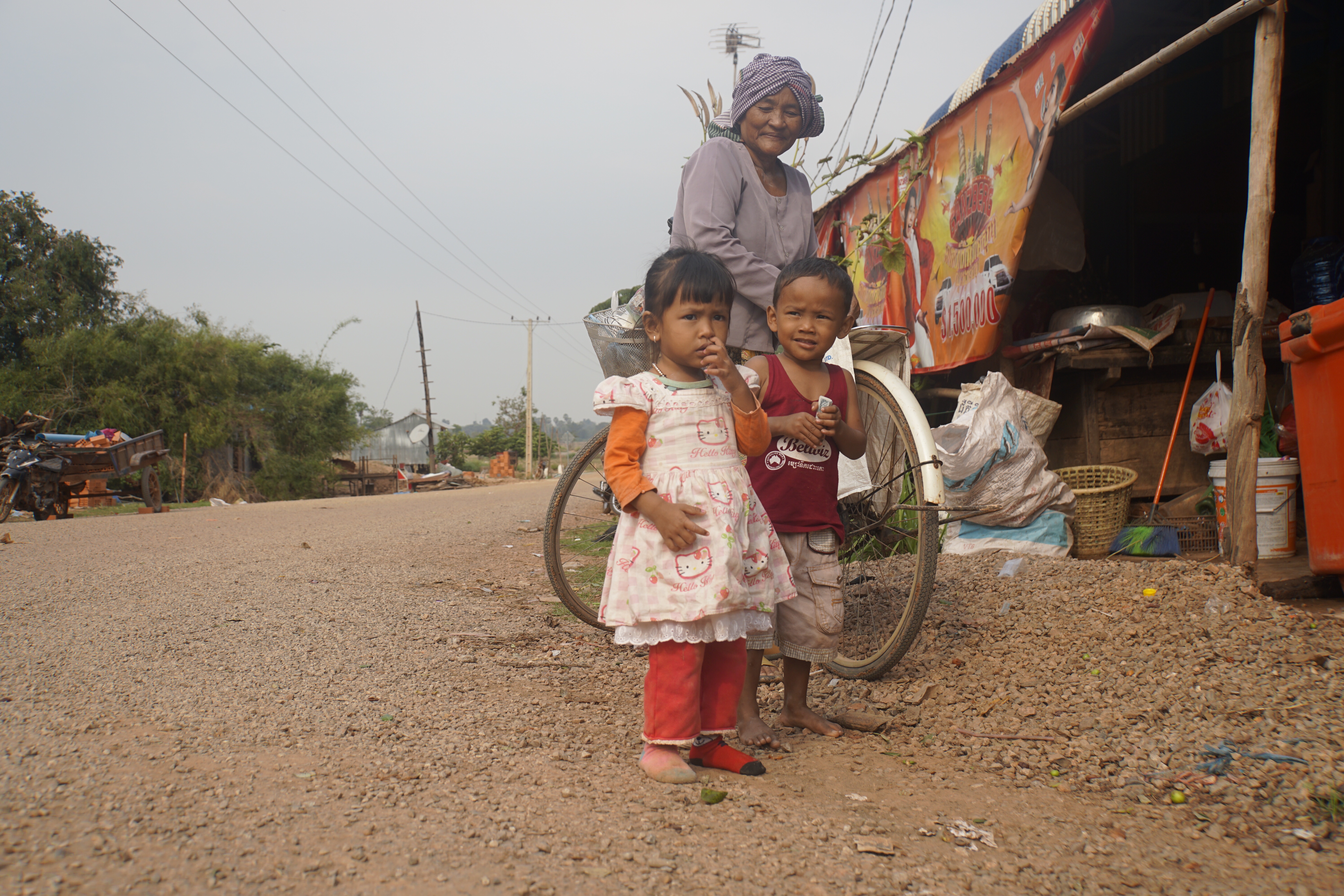 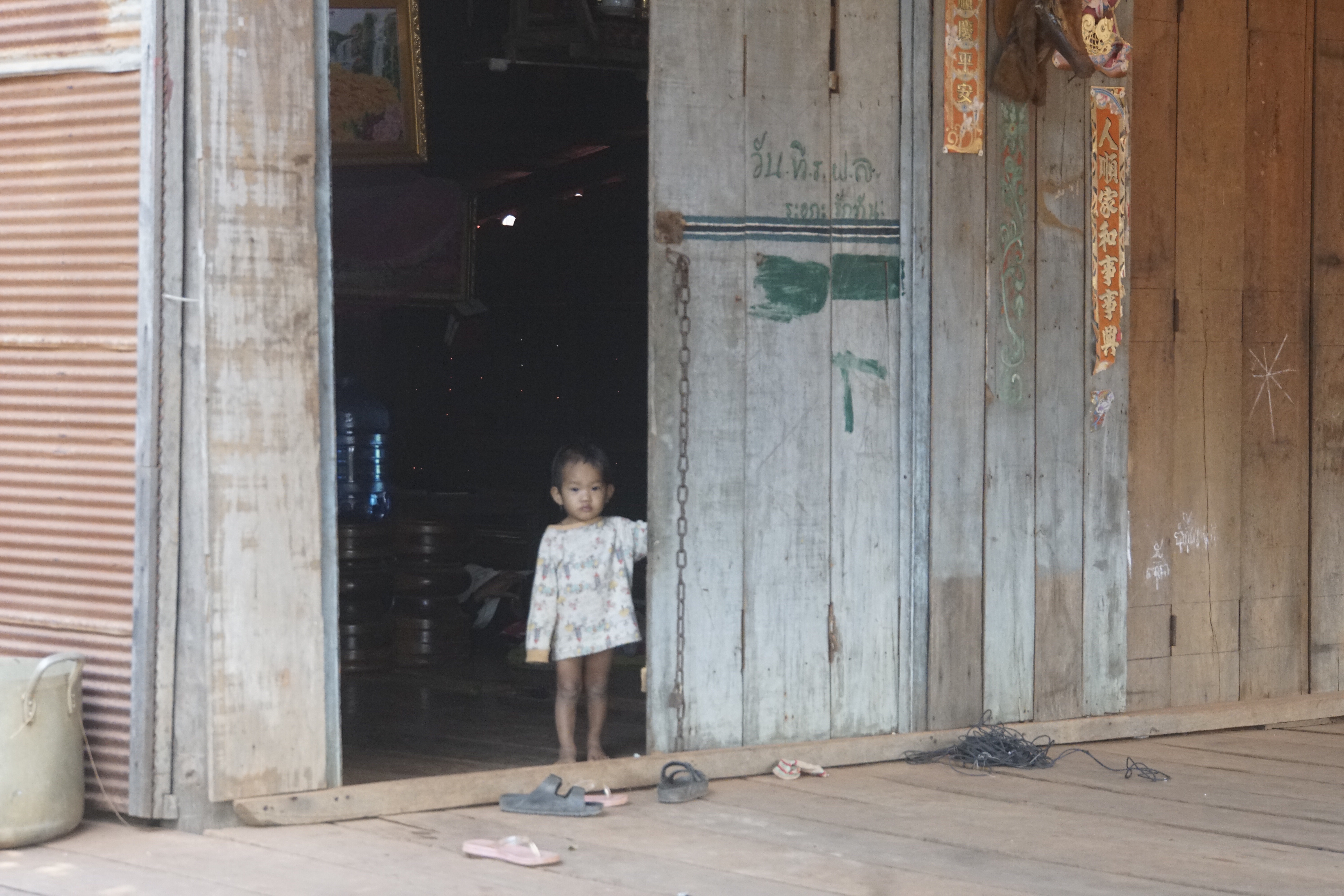 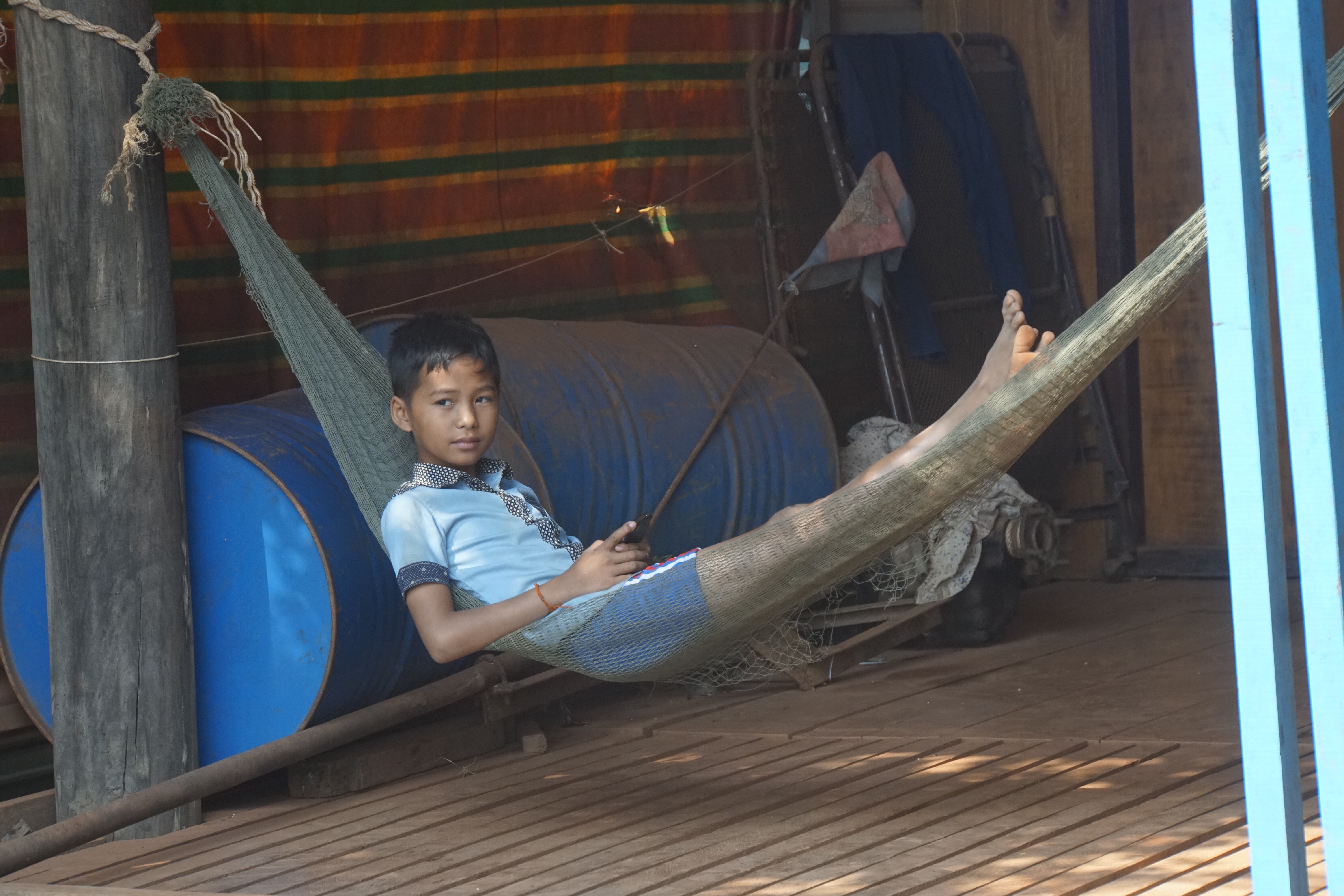
In Kompong Khleang, over 20,000 people live in high stilt houses which tower up to 10 meters over the water. It is a spectacular place which only gets a small number of visitors.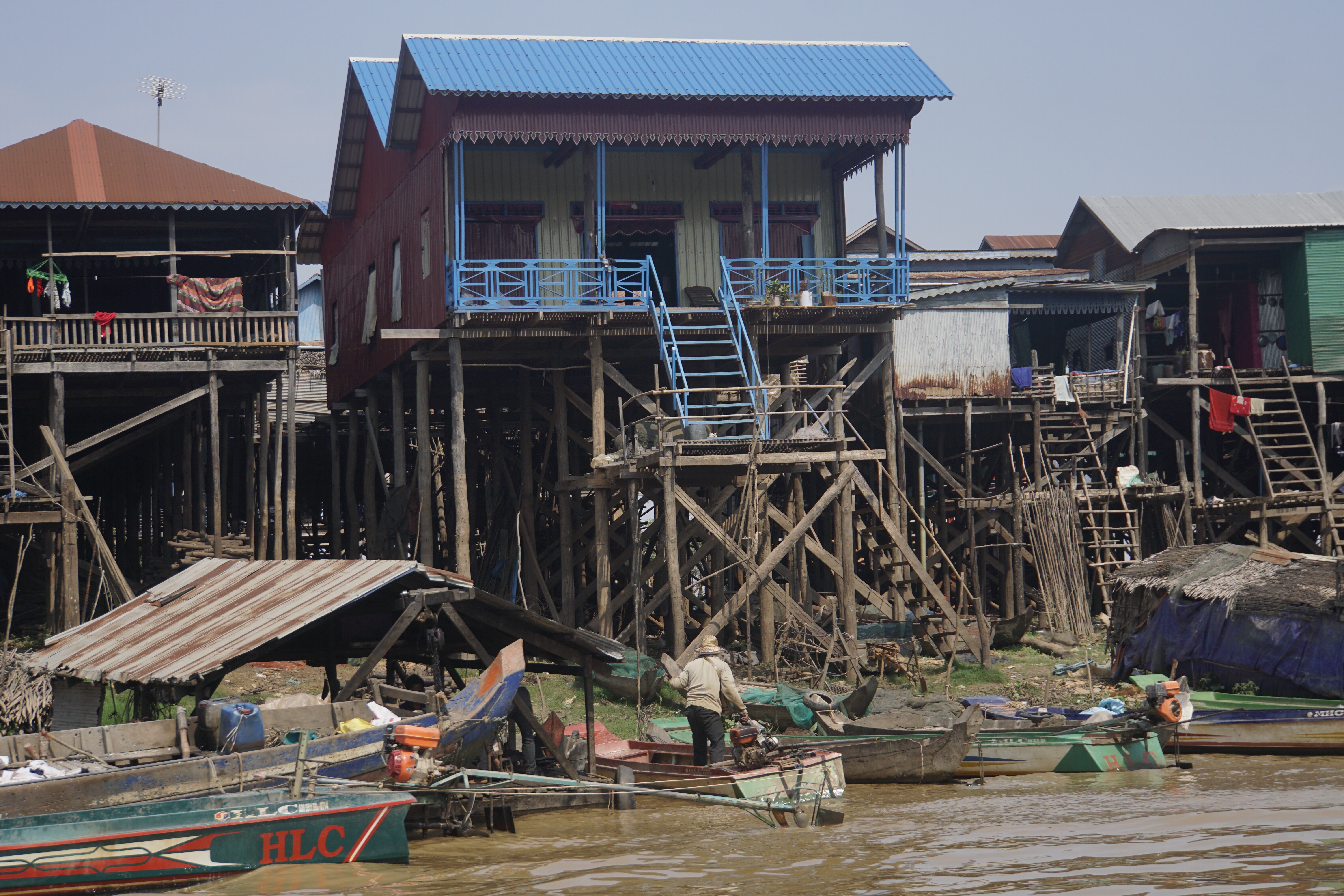 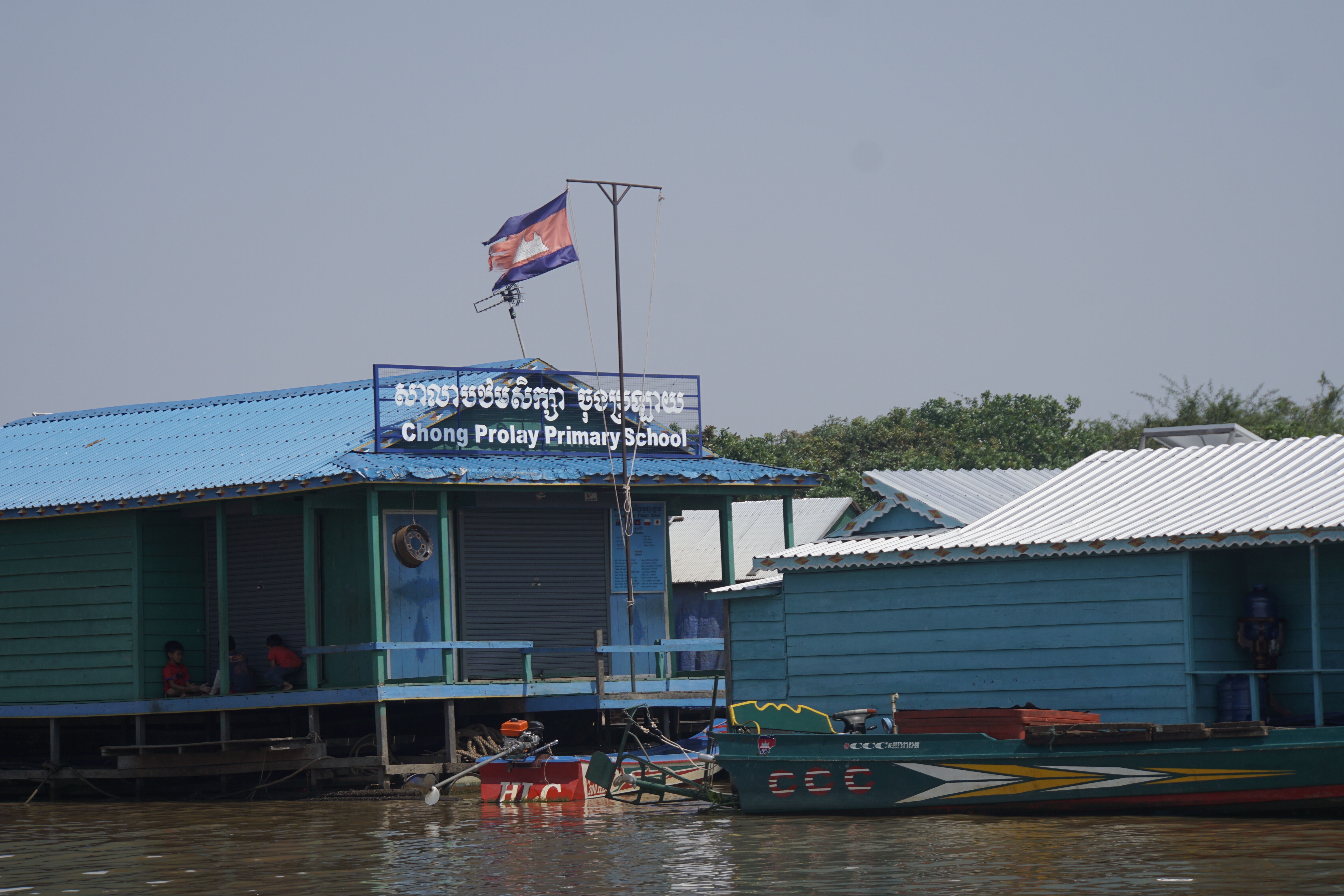 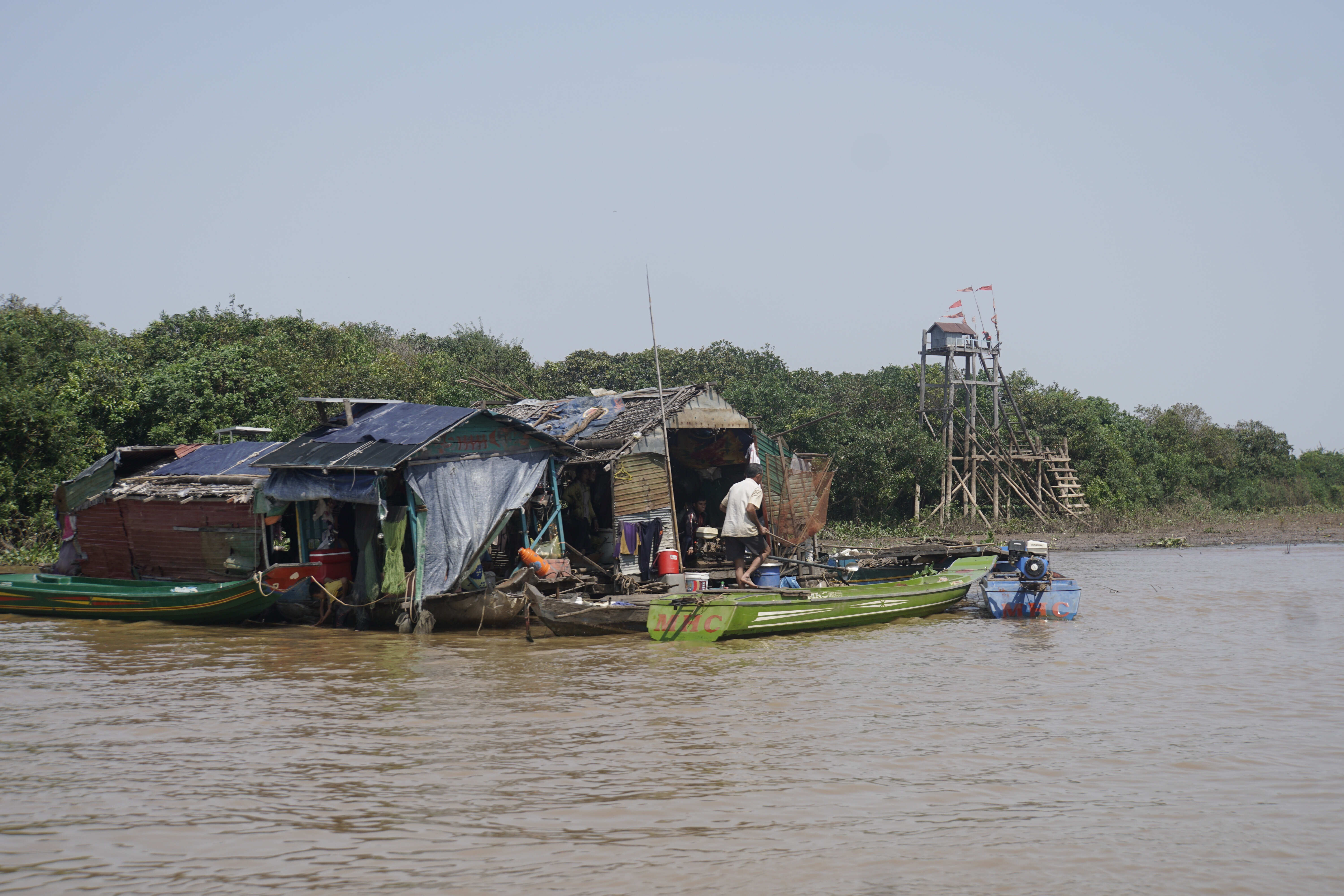
There is a small island at the centre of the village which has a bustling market. We take a boat tour to see the floating market, then return for a lunch of fresh fish prepared in Khmer style at our boatman’s house and to give a Karl a chance to fly his drone. After lunch we drive to the remote and recently “de-mined” Angkor site of Beng Melea
for some amazing, “Indiana Jones” type temple exploration.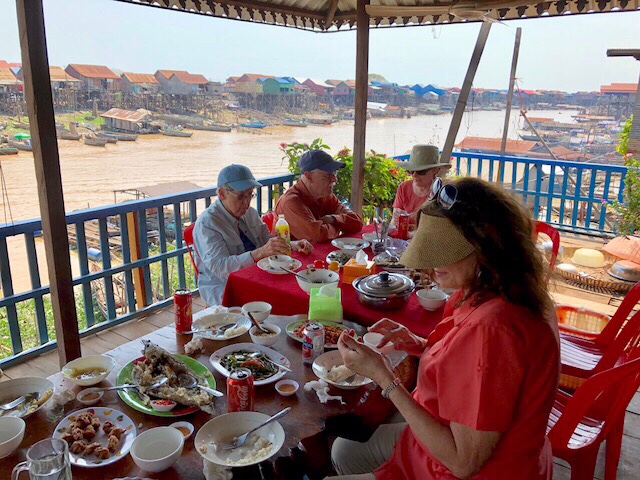 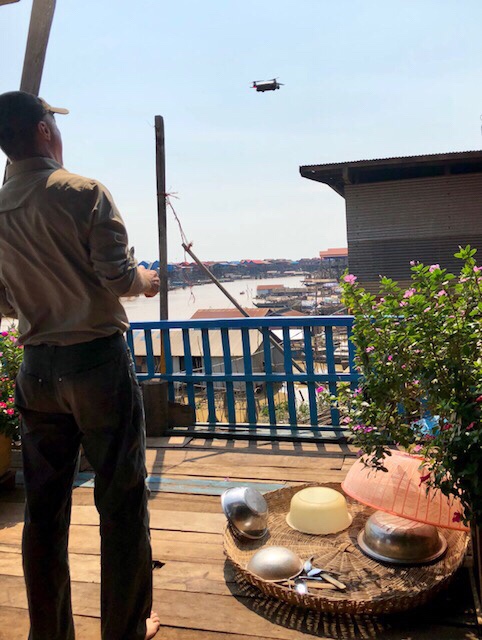
      
The whole site of Beng Melea is bathed with dappled light from the jungle canopy making it a fabulous temple for adventurous photographers. And climbing over boulders to get around the site is an adventure, as well.
We return to the hotel late afternoon, showered and went back to the Mexican Restaurant with most of the group. Karl’s wife Paov joined us. She is lovely.
|
|






































